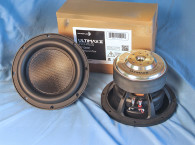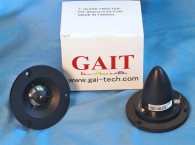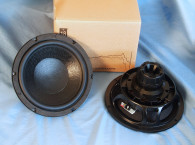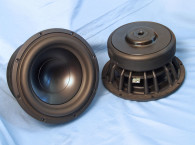
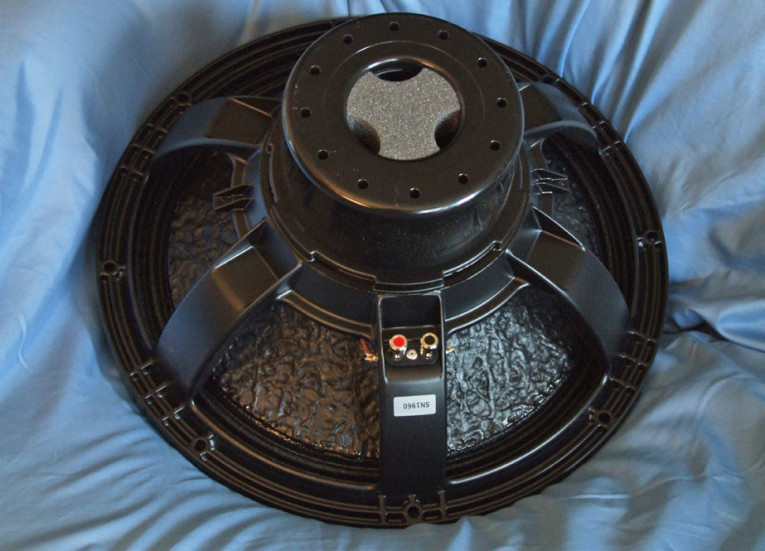
Now that we have high-performance digital Class-D amplifiers in pro sound, we need lower impedance transducers to obtain maximum current from these devices. One digital amplifier company, Powersoft Audio, is certainly headed in this direction. On its website, Powersoft Audio said, regarding the 8,000W iPalMod OEM digital amplifiers: “IpalMod can work with standard transducers, but the jaw-dropping results this technology grants can be obtained only by using specifically designed woofers. Powersoft has already teamed up with major loudspeakers manufacturers to develop IPAL integrated products. We encourage other manufactures to design and produce its own line of IPAL compatible speakers by providing tools and support needed to aid the process.”
Eighteen Sound happens to be one of those “major loudspeaker manufacturers.” And, it has developed two high-powered transducers in accordance with Powersoft Audio’s IPAL standards — the 21” 21iD, and the 18” 18iD. The 18iD is the subject of this review (see Photo 1). Designated as a low-frequency transducer, the 18iD is high-power handling woofer rated at 1,800 WRMS (AES Standard) and weighs 27.5 lb. Features for the 18iD include a proprietary six-spoke cast-aluminum frame that incorporates six 46 mm × 5 mm convection cooling vents located below the spider mounting shelf. Additional forced air cooling is provided by a series of 12 5-mm diameter peripheral vents located in the neodymium motor return cup, and a foam damped 40-mm diameter pole-type vent.
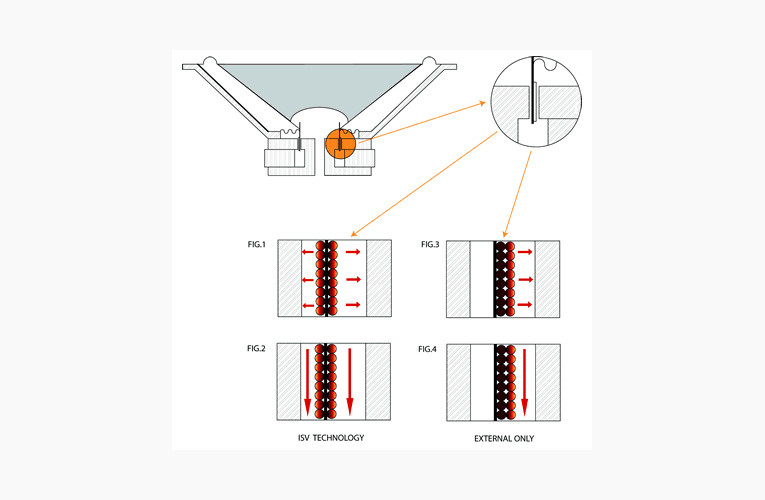
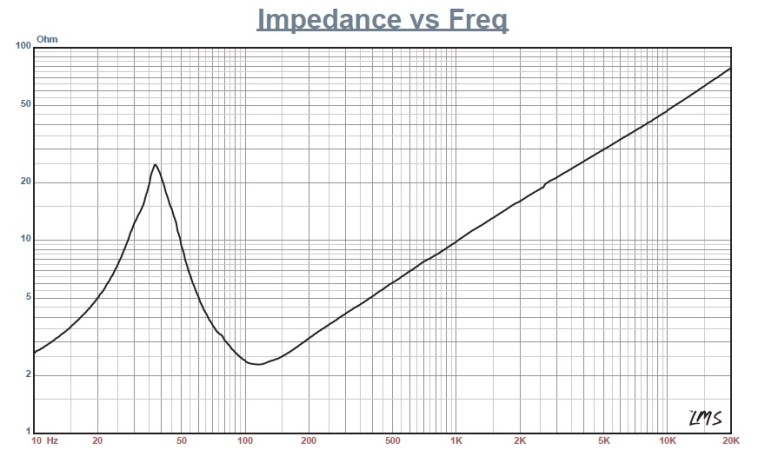
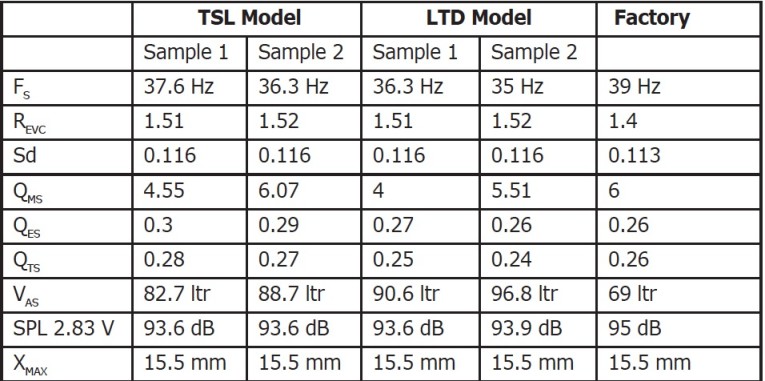
The cone assembly consists of an 18” straight profile ribbed carbon fiber loaded paper cone with a waterproof coating and a large 6” diameter hard paper dust cap. Suspension is provided by a three-roll M-shaped coated (sealed) polycotton surround in conjunction with Eighteen Sound’s Triple Silcone Spider (TSS) spider technology.
The 18iD has three 7.75” diameter flat silicone treated polycotton spiders (damper) with the voice coil lead wires center stitched to the center of the “top” spider. All this is driven by a 5.31” (135 mm) diameter high-temperature nonconducting former wound with a four-layer inside/outside round aluminum wire winding that Eighteen Sound calls Interleaved Sandwich Voice (ISV) coil (see Figure 1). The voice coil is terminated to a pair of color-coded chrome push terminals. Powering the 18iD is a large neodymium ring magnet, in conjunction with a distortion reducing aluminum shorting ring (Faraday shield).
I began testing for the 18iD, using the Linear LMS and VIBox to produce both voltage and admittance (current) curves. The driver was clamped to a rigid test fixture in free air at 0.3, 1, 3, 6, 10, 15, 20, and 30 V. I use a procedure that attempts to achieve the third time constant on each sweep, such that LMS oscillator is turned on for a progressively increasing time period between sweeps, generally at a frequency that produces maximum current. I used actual measured cone assembly weight provided by Eighteen Sound.
Next, I post-processed the 16 550-point stepped sine wave sweeps for each sample and divided the voltage curves by the current curves to derive impedance curves, and calculate the phase (LMS is a single channel analyzer and does not measure phase, but does have a highly accurate phase proprietary calculation methodology). I imported the data along with the accompanying voltage curves to the LEAP 5 Enclosure Shop software.
This is a more time-consuming process than the usual low-voltage small signal impedance curve technique used for deriving Thiele-Small (T-S) parameters. However, the LEAP 5 LTD transducer model methodology results in a much more accurate prediction of excursion at high voltage levels, one of the real fortes of the LEAP 5 software.
Because most T-S data provided by OEM manufacturers is produced using either a standard modeling method or the LEAP 4 TSL model, I additionally created a LEAP 4 TSL model using the 1 V free-air curves. I selected the complete data set, the multiple voltage impedance curves for the LTD model, and the 1 V impedance curves for the TSL model in LEAP 5’s Transducer Derivation menu and created the parameters for the computer enclosure simulations. Figure 2 shows the woofer’s 1 V free-air impedance curve. Table 1 compares the LEAP 5 LTD, the TSL data, and the Eighteen Sound factory parameters for both 18iD samples.

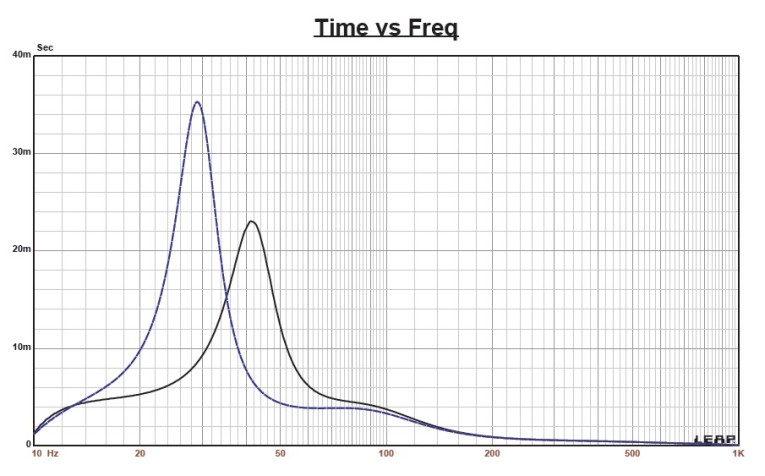
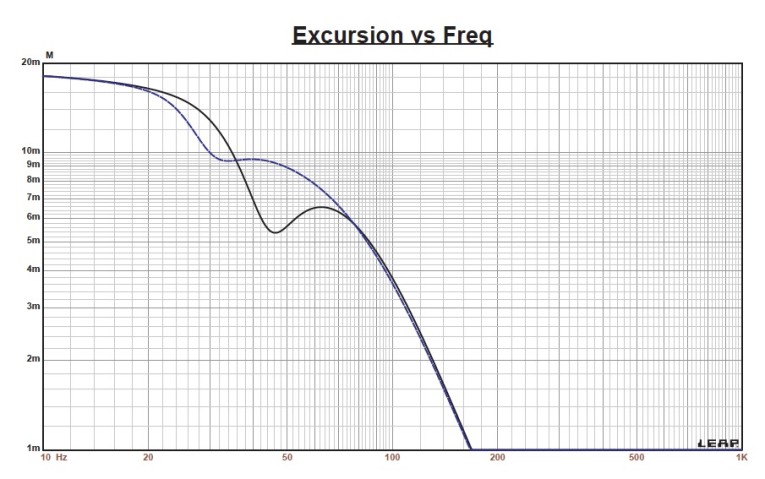
Parameter measurement results for the 18iD showed reasonably close agreement with the 18iD factory data, with some variance in the VAS numbers and the sensitivity. Eighteen Sound’s sensitivity is a 1 W/1 m number, while mine is 2.83 V/1 m. Given this, I proceeded to set up two computer enclosure simulations using the LEAP LTD parameters for Sample 1. Eighteen Sound recommends 3.89 to 12.36 ft3 for vented enclosures. Given that, I programmed two vented alignments, a 3.86 ft3 box alignment, with 15% fiberglass fill material tuned to 48 Hz, and a larger alignment in a 10 ft3 vented enclosure, with 15% fiberglass fill material and tuned to 44 Hz.
Figure 3 shows the 18iD’s enclosure simulation results in the 3.86 ft3 and 10 ft3 vented boxes at 2.83 V at a voltage level high enough to increase cone excursion to 17.8 mm (XMAX + 15%). This produced a –3 dB frequency of 39 Hz (–6 dB = 37 Hz) for the 3.86 ft3 ported enclosure and F3 = 27 Hz (F6 = 25.5 Hz) for the 10.0 ft3 vented simulation.
Increasing the voltage input to the simulations until the maximum linear cone excursion was reached resulted in 125.5 dB at 60 V for the smaller enclosure simulation and 124 dB the same 60 V input level for the larger vented box. Figure 4 shows the 2.83 V group delay curves. Figure 5 shows the 60 V excursion curves. The voltage input was limited to 60 V as the XMAX + 15% number was being exceeded just lower than 20 Hz. With a 20 Hz high-pass filter, the 18iD could easily have been driven several decibels louder for the same criteria.
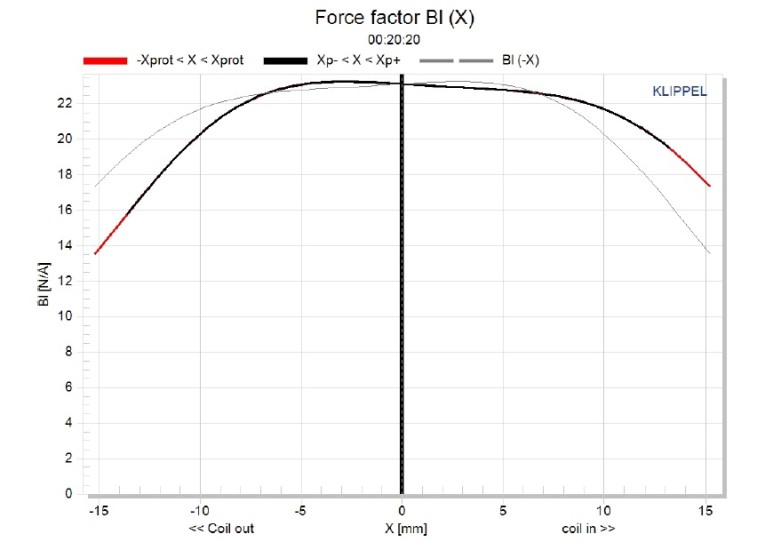
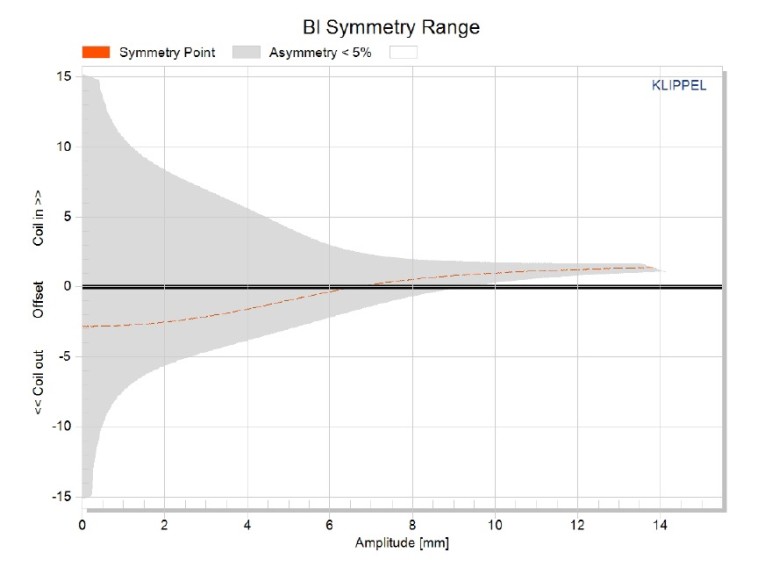
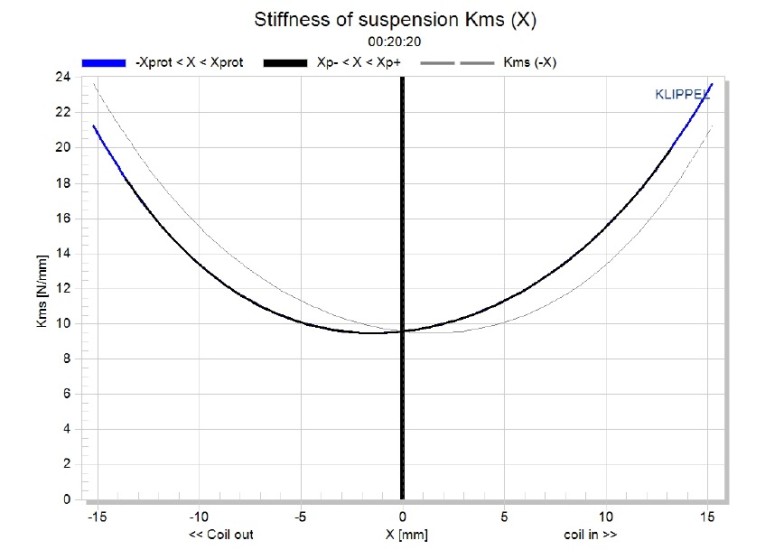

Klippel analysis for the 18iD produced the Bl(X), KMS(X), and Bl and KMS symmetry range plots shown in Figures 6–9. Our analyzer is provided courtesy of Klippel GmbH. Patrick Turnmire of Redrock Acoustics (www.redrockacoustics.com) performs the analysis.
The 18iD’s Bl(X) curve is broad and flat with some “tilt” moving from outward to inward, which is common (see Figure 6). There is some asymmetry beyond 10 mm excursion. The Bl symmetry plot, at 8 mm excursion where the certainty curve narrows, shows a 0.55 mm coil-in offset that increases to 1.3 mm beyond 14 mm (see Figure 7).
Figure 8 shows the 18iD’s KMS (X) curve, which is rather symmetrical but with some forward coil-out offset. Figure 9 shows the KMS symmetry range curve with the forward offset at about 2 mm excursion, where the certainty overlay narrows is 1.4 mm and decreasing to an trivial 0.6 mm coil-out offset beyond 14.5 mm excursion.
The 18iD’s displacement limiting numbers were XBl at 70% (Bl decreasing to 70% of its maximum value) was greater than 13.2 mm and for the crossover (XC) at 50% (compliance decreasing to 50% of its maximum value) was 12.7 mm, which means for the 18iD, the compliance is the most limiting factor for the prescribed distortion level of 20%. Since this woofer is likely to be band-limited somewhere between 100 to 300 Hz, where perception of distortion in minimal, this is more than acceptable.
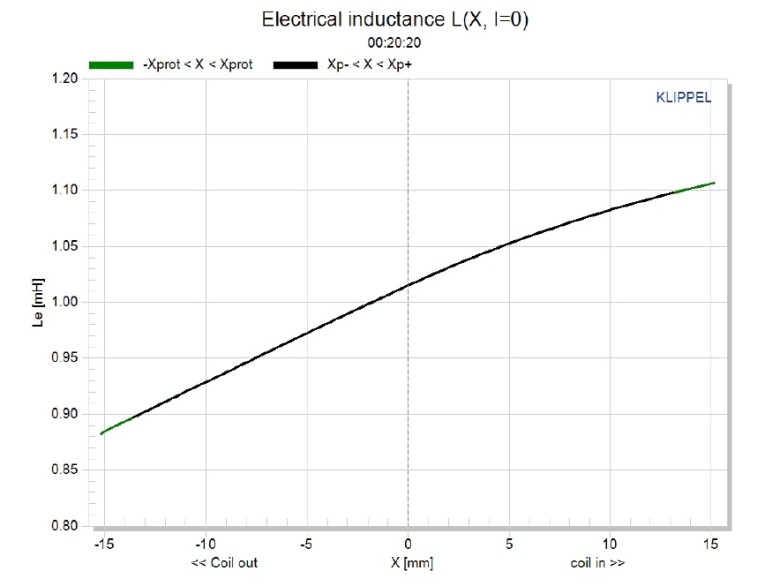
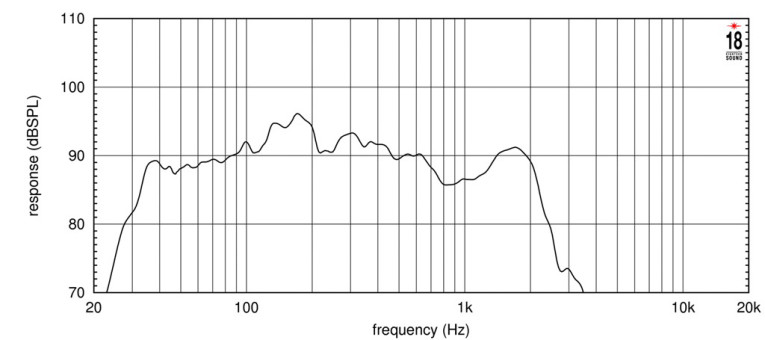
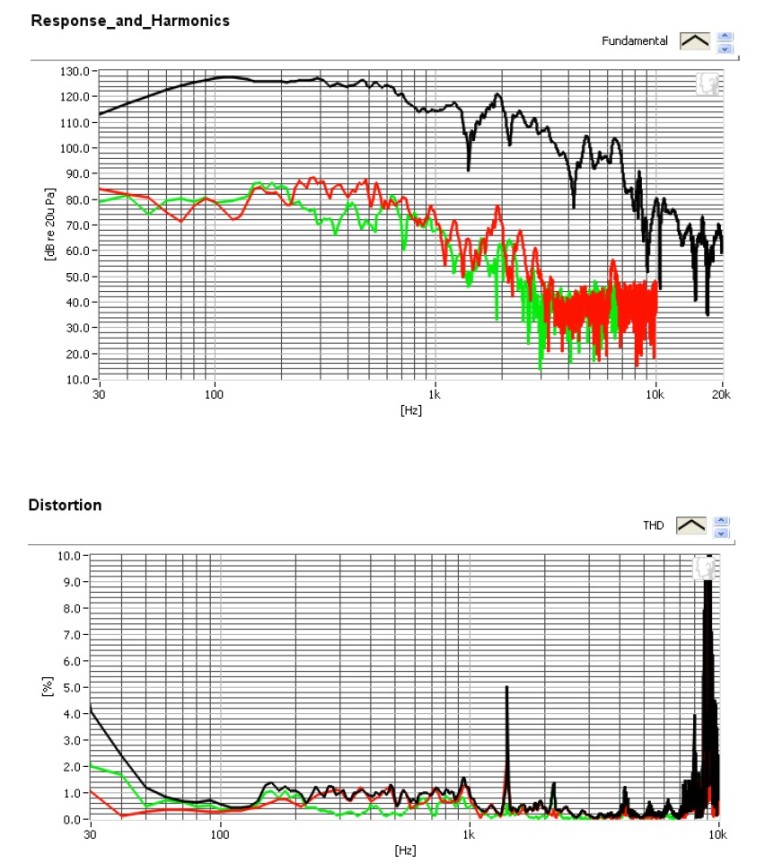
Figure 10 gives the 18iD’s inductance curve L(X). Inductance will typically increase in the rear direction from the zero rest position as the voice coil covers more pole area, unless the driver incorporates a shorting ring.
The 18iD does incorporate an aluminum shorting ring and that, along with the unique winding configuration, yields a inductance variation maximum from both XMAX positions is less than 0.23 mH, which is minimal variation for a woofer with this large of a motor.
I dispensed with the sound pressure level (SPL) measurements for the 18iD, mostly because I don’t keep 18” or 21” size cabinets in my inventory of test fixtures, and do not own a Klippel Near Field Scanner. However, Figure 11 shows the factory SPL curve. I used the Listen SoundCheck 14 with the Listen AmpConnect analyzer and the SC-1 microphone with the SoundConnect power supply (courtesy of Listen, Inc.) to measure distortion. Because I did not have an available enclosure, I did not use Listen’s SoundMap software for time-frequency presentations.
To set up for the distortion measurement, I rigidly mounted the 18iD in free air and set the SPL to 104 dB at 1 m (13.6 V) using a pink noise stimulus. (SoundCheck has a software generator and SPL meter as two of its utilities.) Then, I measured the distortion with the microphone placed 10 cm from the dust cap. Figure 12 shows the 18iD’s distortion curves.
Eighteen Sound has produced a really interesting iPal Standard subwoofer design that is suitable for use with high-wattage digital amplifiers. The 18iD is obviously an extremely robust 18” pro-sound woofer for mid- to large venue PA applications. Eighteen Sound’s 18iD also comes with several useful and unique proprietary features.
www.eighteensound.com
This article was originally published in Voice Coil, December 2015.




